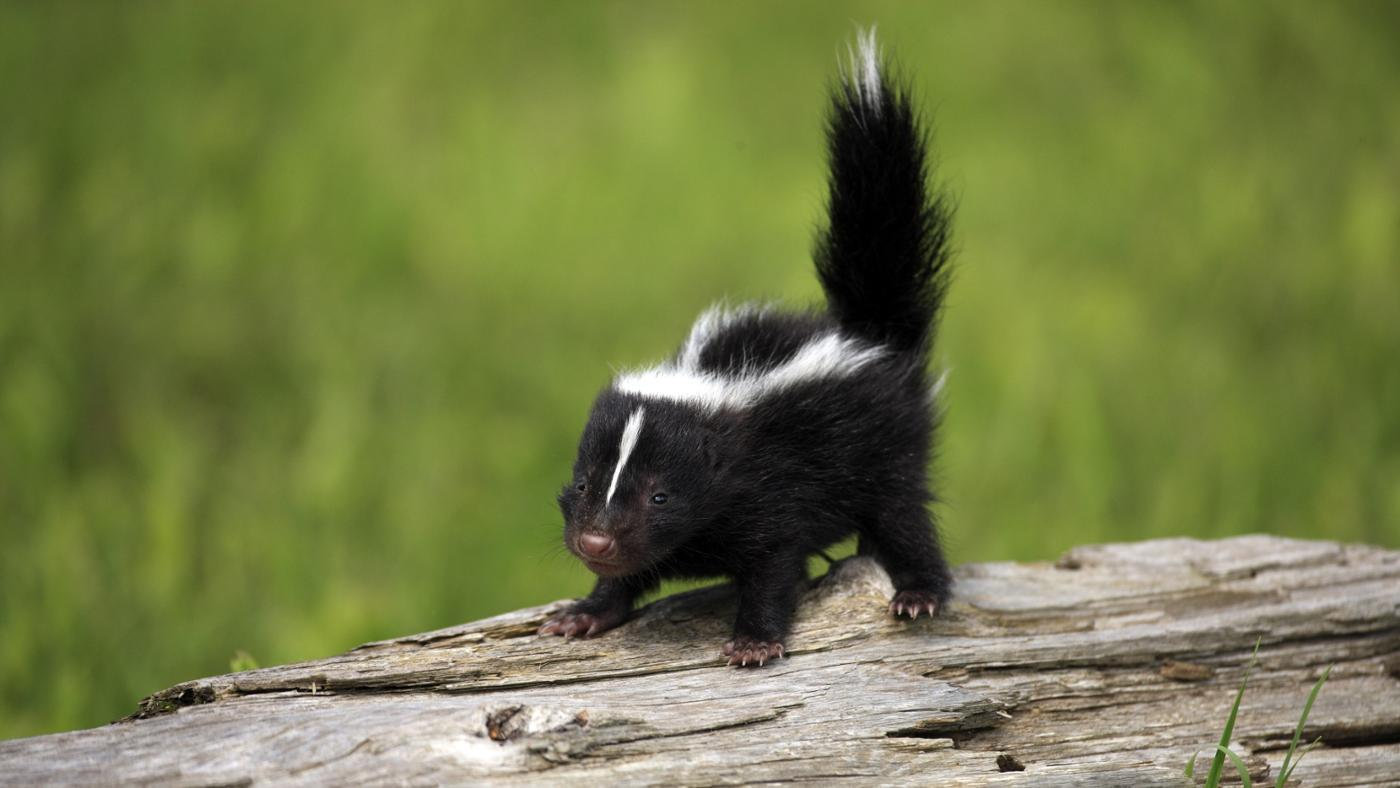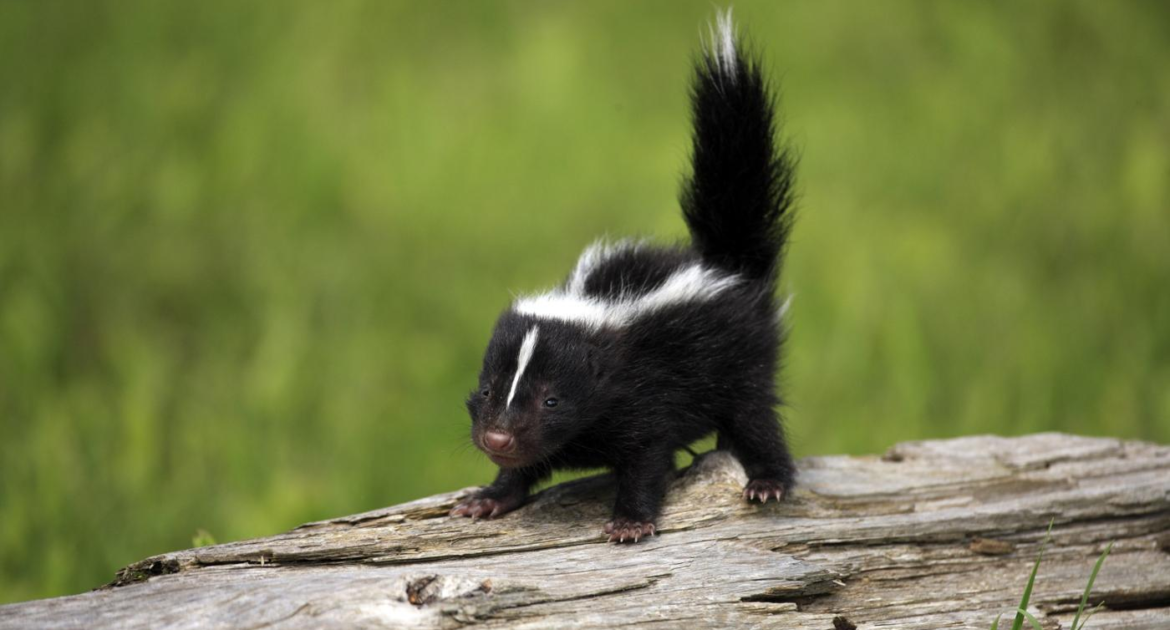“Who smelt it dealt it!” You’re probably familiar with this playful statement which is common among family or a group of friends. It is not unusual for the younger ones in the group to face light accusation until an adult decides to “fess up”. Have you ever wondered how skunks would handle this type of situation though? Better yet, how do you handle skunk encounters? With effective and humane skunk removal, Bowmanville residents eliminate the need to detect the source of this pungent smell themselves.
The Infamous Skunk
These animals are notoriously feared for the noxious smell that emanates from a form of ‘biological weaponry’ they possess. Skunks are armed with a very bad smelling oil-based liquid found in their anal gland located in their rectum. This liquid can be sprayed up to ten feet at a given target or dispensed as a mist in the direction of a chasing predator. The scent of the substance is so strong that it is capable of inducing vomiting in humans and has a lasting smell that can stick around for up to ten days. If you have a dog that is the adventurous type and you live in an area known for skunk habitation, keep a bottle of skunk smell removal shampoo on hand. It will at some point come in handy. Another method for removing the smell is by taking a bath and lathering your dog with a combination of baking soda, hydrogen peroxide and an adequate amount of dishwashing soap. If a skunk is seen in an environment you are occupying, it is best to alert someone competent in skunk removal.
Skunks are at their best when you are (usually) asleep- at night. These black and white, cat-sized mammals are primarily nocturnal (which means they occasionally venture out during the day but they are at their most active under the moon) and live mainly in abandoned burrows of other animals when in the rural area. You may find, however, that houses with cellars and porches like some found in Bowmanville make good accommodations for these nightly adventures.
Skunk Sub-Species
Many television features, primarily cartoons have given encouraged the idea that there is only one type of skunk. There are however approximately five types of skunks that are found in the wild. These include:
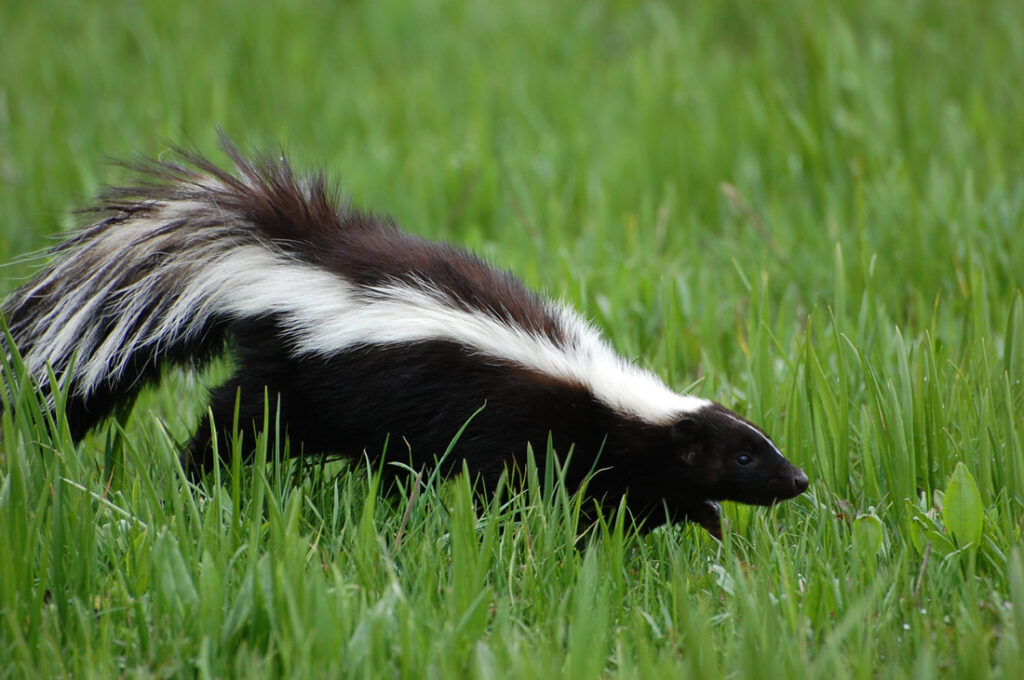
Striped Skunk: One of the most commonly known skunks to people is the ever-wandering Striped Skunk. These skunks weigh in at an average of five kilograms (5kg). The males are a bit larger than the females although both of them are the same on the “cute scale”. This creature is not very picky about where it lives but, is able to adapt to most open forests or built-up environments.
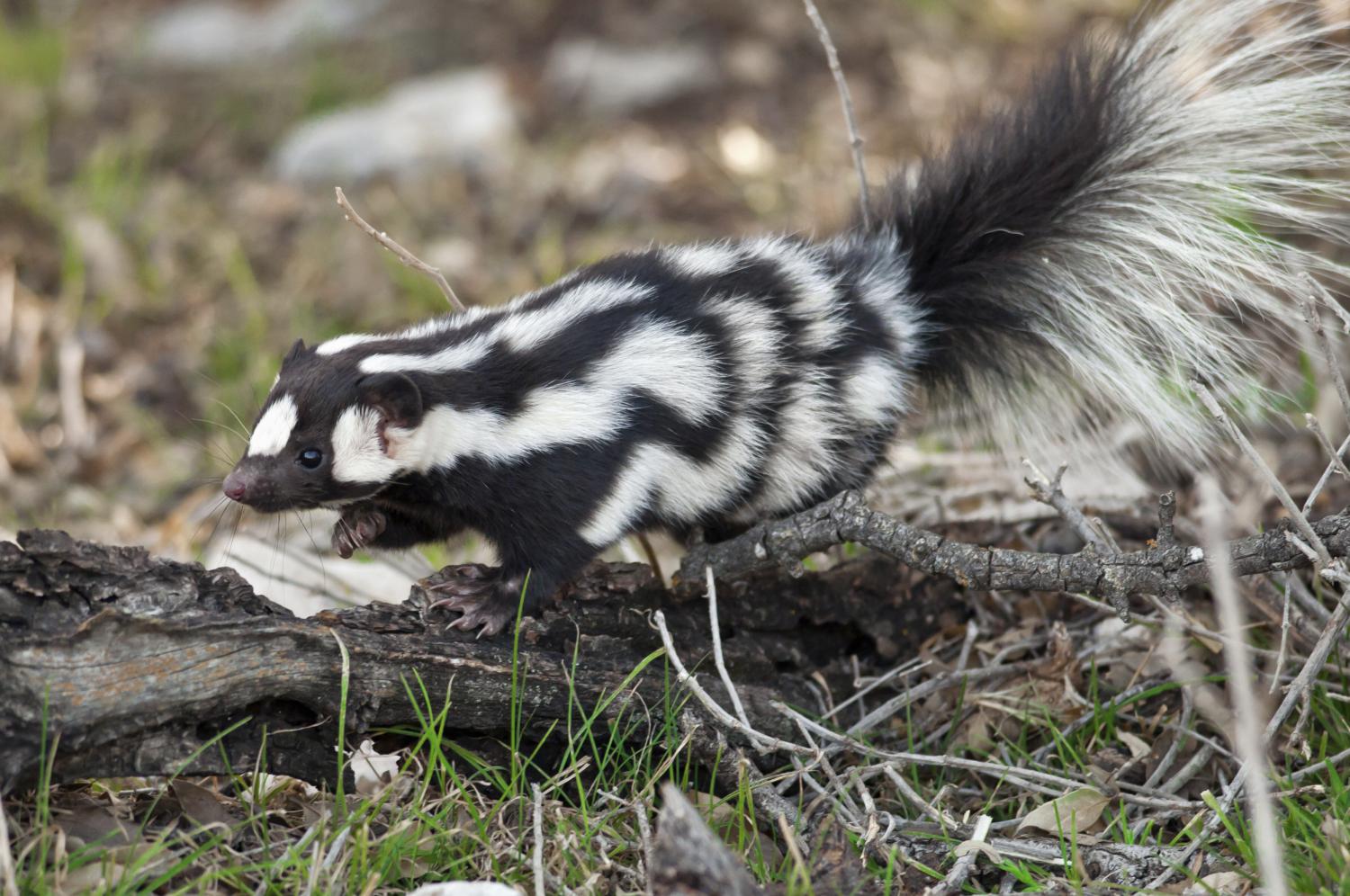
Spotted Skunks: These animals are another in the line of skunks that seem too cute to be so smelly. The Spotted Skunks, as they are called, are not technically sporting spots. Instead, they have broken stripes that are specific to each Spotted Skunk like a fingerprint. The Spotted Skunk has a unique method of showing that it is about to attack. The skunk actually stomps its feet then flips up on its front paws into a “handstand” before attacking.
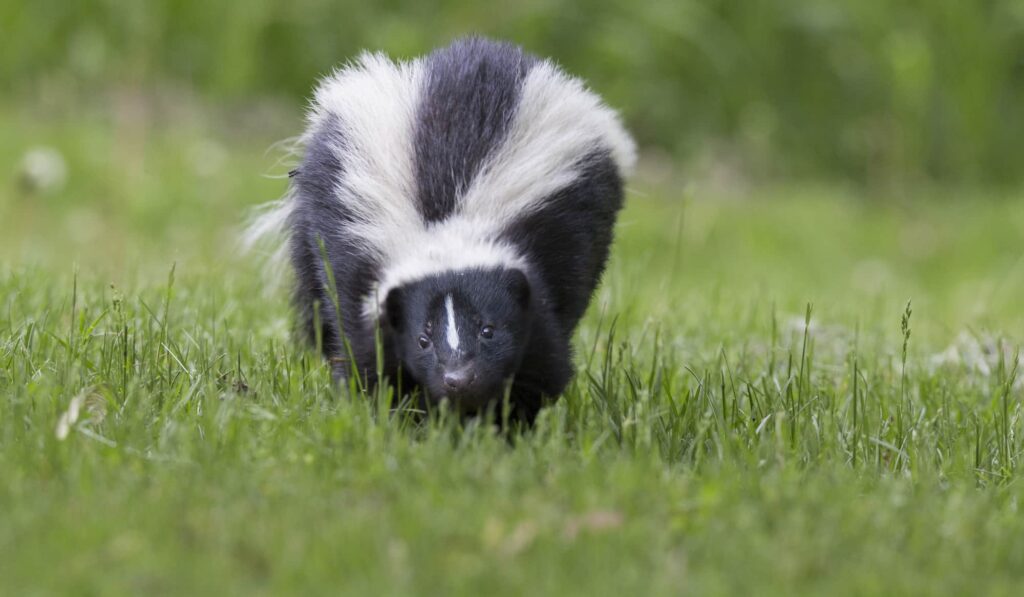
Hooded Skunks: These are the bandits of the group that are actually “dressed” for the occasion. The Hooded Skunk has white strip of hair at the back of its neck stretching to the end of its tail, taking the look of a super hero’s cape. The hooded skunk is said to have a longer tail than its cousins.
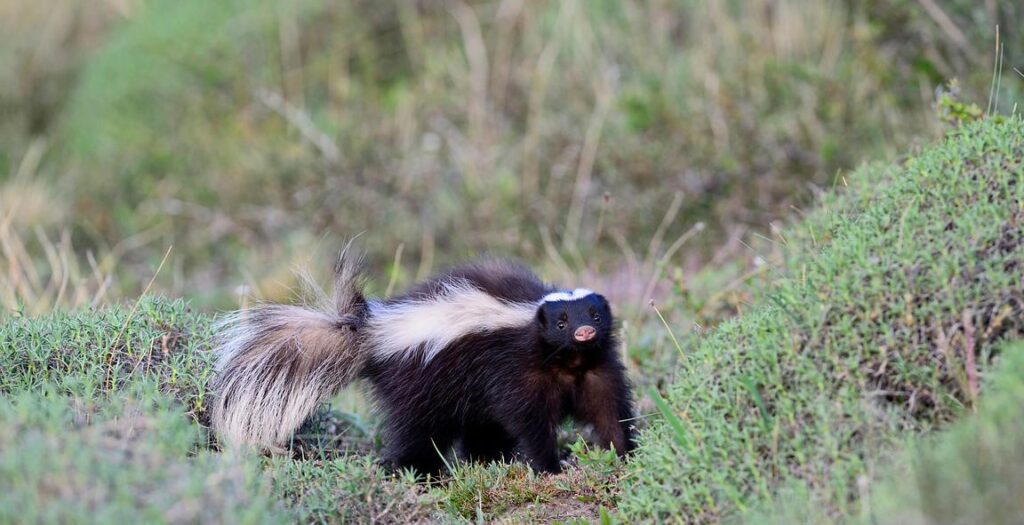
Hog Nosed skunks: As the name suggests; it’s all in the nose. These skunks have a significantly different nose from the black nose you’re accustomed to on the animal. It is more like a pig’s snout as it has similar features. This little guy is said to be the largest of the skunk family and varies from its cousins with an almost completely black coat.
Stink Badgers: Yes! They’re Skunks. Despite the badger attachment, these are definite members of the family. They look more like badgers hence the name as they have robust bodies and stumpy tail. As with other skunks, their diets are made up of insects, eggs and some types of plants that are foraged for in the wild. These muscled guys are also said to have the most potent of stenches when compared to their counterparts.
Skunks play a vital role for the ecosystem and generally prefer to stay to themselves. They are normally quite skiddish and will avoid human contact if possible. If you spot a skunk on your property or suspect one could be living under your deck, call the skunk removal experts at Skedaddle.
